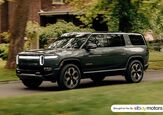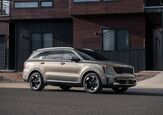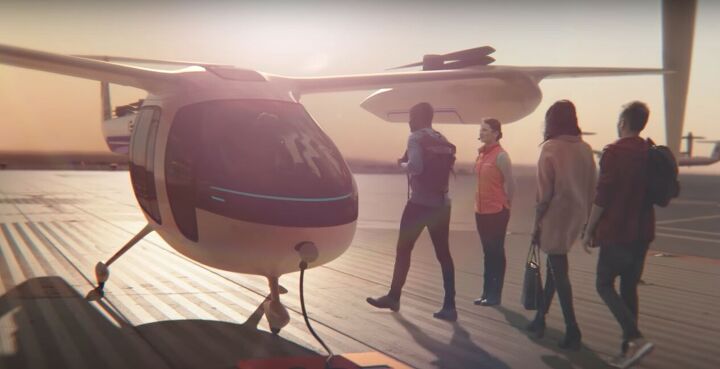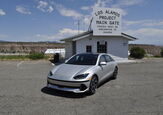#Drones
Audi Now Has Permission to Test Flying 'Cars' in Germany
The flying car repeatedly proves itself as the dumbest idea since the industrial revolution kicked off. With the exception of takeoffs and landings, aircraft don’t need roads and automobiles aren’t really engineered for the sky. They’re typically far too heavy and have aerodynamics intended to keep them on the ground. A good car does not make for a good plane, and vice versa.
While a few flying cars do exist, they’re really just airplanes modified to allow for car-like earthbound driving. Functional, but not particularly effective on the road. That’s why the industry is shifting toward designs more akin to helicopters. The newest trend is to supersize drones and affix them to the top of lightweight self-driving automobiles.
That appears to be the direction Audi is headed in its partnership with Airbus. But surely this is engineering at is most masturbatory. If you’ll excuse the pun, these kinds of projects never really get off the ground. We see concept designs, hear some lofty promises, and then nothing ever comes of it. Moller International has been working on its SkyCar for decades and now the company is trading at a penny per share with nothing to show for itself but a concept capable of covering a couple feet from the pavement.
What does Audi have that’s so different?
North American Skies Will Be Filled With Flying Cars in 10 Years: Uber CEO
Uber Technologies Inc.’s chief executive, Dara Khosrowshahi, predicts a nearish future where civilians whiz around in sky-bound automobiles.
“There will be people flying around Dallas, Texas,” Khosrowshahi said at the Digital Life Design conference in Munich, his first work-related appearance in Europe since taking over as Uber’s CEO last year. “I think it’s going to happen within the next ten years.”
Considering we’ve been waiting on flying cars for roughly 100 years, what’s another decade?
We’re kidding, of course. Anyone with a modicum of common sense understands that mass-produced floating automobiles are pure fantasy. Work on such vehicles hasn’t really progressed all that swiftly and there’s been no breakthroughs in the technology, either. The best anyone seems to be able to do is build massive drones ( which crash) or automobiles that can be converted into airplanes.
Does that make Khosrowshahi a bearded liar?
Are Connected Drones the Next Automotive Renaissance or a Pipe Dream?
Now that automakers have more or less mastered the ability to assemble competent transportation for the masses, the quest to build a better car has branched out into strange places. Connectivity is one of the burgeoning frontiers of automotive achievement and its threshold for greatness continues to be raised. With navigation and phone integration handled, manufacturers have begun seeking other ways to interconnect vehicles with all manner of devices. Occupants can now benefit from onboard GPS, Wi-Fi, and — more recently — smart home devices like Amazon’s Echo.
Drones could be next.
While it sounds almost comically implausible, several automakers and suppliers have begun toying with the idea of equipping specific models with drones. Last September, Mercedes-Benz introduced the idea that its delivery vans should have the option of being equipped with package-toting quadcopters as part of a five-year-plan to terrify suburbia. FCA designed a concept Wrangler for the Easter Jeep Safari that included a roof-mounted landing pad for a recreational drone. Mitsubishi Electric is showcasing its new FLEXConnect.AI infotainment platform with drone functionality.
Shenanigans: Toyota's 'Flying Car' Doesn't Fly and Isn't a Car
We need to have a candid discussion about flying cars. Automobiles and airplanes entered into the mainstream around the same time, and we’ve talked about combining them into a singular platform ever since. While nobody has successfully pulled it off, we keep acting like the technology is right around the corner. The closest we’ve gotten are the Terrafugia Transition and Pal-V One. However, both of those products make major on-road sacrifices, undergo a pre-flight metamorphosis, and require regular access to a runway. They’re still not representative of anything we’d consider a real car.
Lack of success hasn’t stopped automakers from dabbling in the field of aviation. Toyota has purchased Cartivator Resource Management in the hopes that its “flying car” expertise will yield a vehicle capable of lighting the torch at the 2020 Olympic games in Tokyo. Still, based on the firm’s progress to date, we can only imagine the attempt ending in a globally broadcast fiery disaster.
The Next Big Thing for Mercedes-Benz Vans: Drones
Mercedes-Benz plans to spend piles of cash figuring out exciting new business models for its vans segment, and one idea involves invading people’s airspace.
Because most of its van buyers are in the delivery business, the German automaker sees benefits in offering a system where part of a parcel’s journey is accomplished using a drone, Reuters reports.
While You Were Sleeping: Audi RS3 Sedan, Toyota HiLux Reveal and Cameras Are Everywhere
Looking south of the A4 in Audi’s current range of motors, the hottest vehicle in its North American lineup is the current S3. Those of us west of the Atlantic don’t get to enjoy the turbocharged five-pot RS3 Sportback. Thankfully, Theophilus Chin is on the scene to digitally imagine our Ingolstadt desires with this compromise – the RS3 sedan.





















Recent Comments